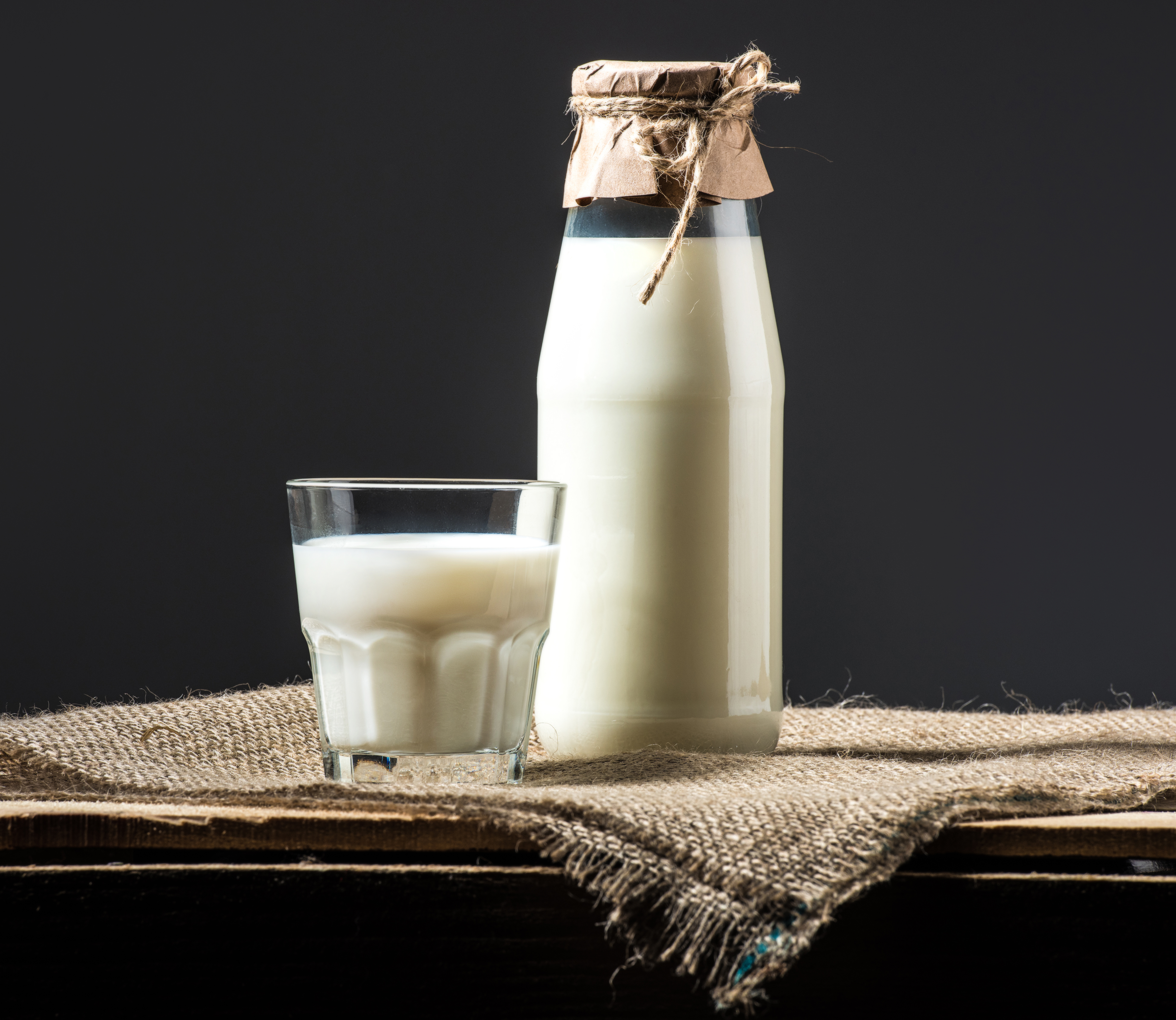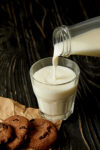
Keeping Unpasteurized (Raw) Milk Fresh
It was hard to keep food cool in the 1800s, especially during the summer. Refrigerators were cooled by large blocks of ice, but were small and weren’t able to maintain a constant degree of coolness.
In the United States, electricity didn’t become common in homes until the 1930s and electric refrigerators not until the late 1940s.
Refrigerated pasteurized milk stays fresh longer than raw milk, but it wasn’t until 1947 that states in the U.S. began enacting mandatory dairy pasteurization laws.
INFORMATION BELOW FROM 1800s COOKBOOKS
It is of prime importance that the dairyman delivers clean fresh milk and the milk must remain in this condition until it is used. This can occur only when the housewife knows how to care for it properly after it enters the home. Some of the blame laid to the careless handling of milk by dairymen really belongs to housewives, for very often they do not take care of milk in the right way after delivery.
Immediately upon delivery, the bottle containing the milk should be placed in the coolest place available, never being allowed to stand on the porch in the sun or where such animals as cats or dogs may come in contact with it.
When the milk is to be used, the paper cap should be carefully wiped before it is removed from the bottle so that any dirt that may be on top will not fall into the milk. If not all the milk is used and the bottle must be returned to the cool place where it is kept, it should be covered by means of an inverted drinking glass or by a glass or porcelain cover.
Never to mix stale milk with fresh milk because the entire quantity will become sour in the same length of time as the stale milk would. Also, milk that has been poured into a pitcher or other open vessel and allowed to stand exposed to the air for some time should never be put back into the bottle with the remaining milk. Such milk is sure to be contaminated with the germs that are always present in the dust constantly circulating in the air.
It is sometimes necessary to keep milk in a vessel other than the bottle in which it is delivered. In such an event, the vessel that is used should be washed thoroughly, boiled in clean water, and cooled before the milk is poured into it.
Particular care should be taken of the empty milk bottles. They should never be used for anything except milk. Before they are returned to the dairyman to be used again, they should first be rinsed with cold water, washed thoroughly with hot, soapy water, and finally rinsed with hot water.
If there is illness in the home, the washed bottles should be put into a pan of cool water, allowed to come to a boil, and permitted to boil for a few minutes. Such attention will free the bottles from any contamination they might have received. The dairyman, of course, gives the bottles further attention before he uses them again, but the housewife should do her part by making sure that they are thoroughly cleansed before they are collected by him.
As has been pointed out, milk should, upon being received, be kept in the coolest place available, which, in the majority of homes at the present time, is the refrigerator. Milk should be placed where it will remain the coolest and where it is least likely to absorb odors. The temperature inside a refrigerator varies with that of the surrounding air. It is because of this fact that milk often sours when the temperature is high, even though it is kept in the refrigerator.
In warm weather, sweet milk should be set on ice if practicable, or if not, in a spring-house. Never put ice in sweet milk, as this dilutes it. One pan of milk should always be set aside to raise cream for coffee. A bucket with a close-fitting lid should be filled with milk and set aside for dinner, one for supper, one for breakfast, and a fourth for cooking purposes.
In case a refrigerator is not available, it will be necessary to resort to other means of keeping milk cool. A cool cellar or basement is an excellent substitute, but if milk is kept in either of these places, it must be tightly covered. Then, too, the spring house with its stream of running water is fully as good as a refrigerator and is used extensively in farming districts. But even though a housewife has none of these at her disposal, she need not be deprived of fresh milk, for there are still other ways of keeping milk cool and consequently fresh.
A simple way in which to keep milk cool is to weight down the bottles in a vessel that is deeper than they are. Then pour cold water into the vessel until it reaches the top of the bottles, replacing the water occasionally as it becomes warm.
A still better way is to wrap the bottle in a clean towel or piece of cotton cloth so that one corner of it is left loose at the top. Then place this end in a pan of cold water that stands higher than the bottle. Such an arrangement will keep the cloth wet constantly and the evaporation of the water from it will cause the milk to remain cool.
Image from Deposit Photos
=================================================
Do You Use Milk or Do you Use Substitutes? Please Leave a Comment Below.
=================================================
